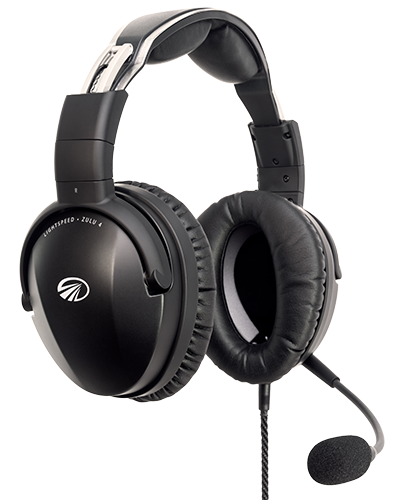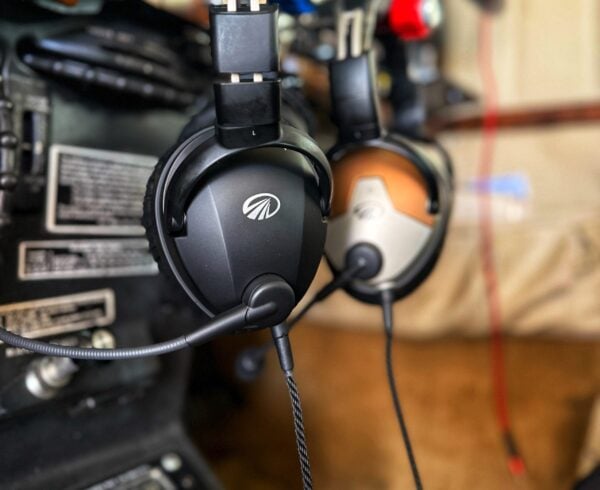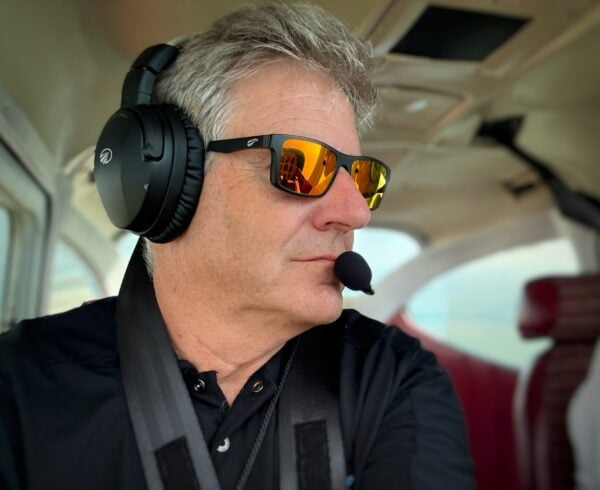Since the introduction of Lightspeed’s new Zulu 4 ANR headset in July of this year, many pilots are enjoying the enhanced features that set this model apart from others in the Zulu series of headsets. It delivers more comfort, more clarity and more flexibility than its predecessors through both hardware and firmware.
One feature promises more clarity when making calls by dramatically reducing up to 90% of the background noise via Bluetooth communications using AI-enhanced technology. Today, many companies claim their products are “AI-enhanced,” but for some customers, Artificial Intelligence has become more of a marketing buzzword than a meaningful innovation.
To understand exactly what AINR means for the Zulu 4, we interviewed Lightspeed’s Executive Vice President of Product Innovation and Quality Brian Frost to explain how his team of engineers employ “AI” in the new Zulu 4 headset. We asked him, “Is AINR just another marketing gimmick?” Here is what he has to say.
Can you define what Artificial Intelligence Noise Reduction is in laymen’s terms?
Artificial Intelligence Noise Reduction (AINR) refers to the method in which the Zulu 4’s communication system was tuned to identify both constant (like engine noise) and instantaneous (like hand claps) noises for the AI model to remove from the background while maintaining the voice.
Is it part of the Active Noise Reduction?
We usually talk about an ANR headset removing background noise from hitting our ears when we refer to Active Noise Reduction. AINR is applied exclusively to outgoing Bluetooth communications and is not part of the Active Noise Reduction system.
Is the AI baked into the headset? The mic? Bluetooth?
Although the boom microphone is a noise cancelling electret microphone, it relies on mechanical means to achieve it. This technology allows for boom microphones to pick up the pilot’s voice while ignoring most of the background noise. However, the mechanical means cannot ignore all the noise in the background. The AINR model is programmed into the Bluetooth device to remove the remaining noise from the outgoing audio stream (either from the boom microphone or the audio recording depending on your setup).
How does it work exactly?
In our case, the use of the term AI refers to a machine learning algorithm, specifically, a deep neural network (DNN) algorithm. This is different from Large Language Models (LLM’s) that many are familiar with like ChatGPT, Copilot, etc. that continue to learn and use new data to feed the next release of the LLM. A DNN algorithm is exposed to samples and learns what is requested of it, tuning the model as the training occurs. Then the final tuned model is programmed into the device to perform its duties.
In our case, the DNN was trained on billions of audio samples from a licensed library (not our customer data or voice recordings). The audio samples include clips of both “stationary” or constant noises and “non-stationary” or noises that change over time. These are both important for the DNN to learn to accurately learn what unwanted noises are. Once tuning is finalized, the DNN is programmed into the audio path on the Bluetooth device to remove unwanted background noise from the outgoing audio. The DNN model that we are using is fixed and not sending any data to any server and continuing to learn anything. Every power on also “resets” it back to the fixed model. At no time is it “listening” to what pilots are saying and analyzing the words.
Does the Zulu 4 AINR model continue to learn?
As described above, the DNN algorithm has a fixed tuning that is programmed in and does not “learn” any new functionality or capability. No audio is being analyzed in real-time to train, learn, or change the behavior of the model and your conversation is completely controlled by you.
Do you know of any similar applications in technology?
Deep Neural Networks are in use all over the world and across many industries. They are used in medical diagnostics to analyze X-Rays and MRIs to detect anomalies, used in cyber-detection to identify new threats, used in machine vision inspecting packaging for defects, and the list goes on and on. In audio, the latest earbuds from Apple utilize Deep Neural Networks (DNNs) to convert audio signals into phoneme sequences (1) to then allow the Language Model processing to take over and begin the speech recognition process.
Finally, is using “AI” just a marketing gimmick?
AI is certainly a buzzword that is ubiquitous today (for good reason!). It’s a transformative technology that is changing seemingly every aspect of life. However, it can be perceived as a marketing gimmick when everyone is using AI to describe all the significant improvements the broad category of AI technology brings. Our product, for example, uses a machine learning, deep neural network algorithm trained on big data to implement stationary and non-stationary unwanted noise reduction while maintaining speech intelligibility and reducing audio distortion. For the majority us, that sentence is not easy to understand in the context of a quick exposure to a new product. The easier to understand term that everyone can understand quickly is “AI,” then you can learn more about the unique approach the product or service has implemented.
So, what we have learned about the AINR function in the Zulu 4 headset is that the “AI” is not what we typically think of when we’re doing a Google search or trying to create a term paper using an LLM like ChatGPT. Instead, it’s the process used to create much clearer output audio so the person on the receiving end of our Bluetooth calls while using the headset can hear us on their end as though there is no engine or cockpit noise at all. To hear some samples of this in practice visit our website here.
References
- AirPods Pro 3: How Apple AI Transforms Real-Time Translation (Sep 19, 2025, https://ai-stack.ai/en/airpods-pro3)

Experience more comfort, more clarity, and more flexibility.
Zulu 4 builds on the success of Lightspeed’s best-selling Zulu series ANR headsets to deliver more comfort, clarity, and flexibility with dual Bluetooth technology with improved outbound audio, a longer mic boom, and FrameFit™ ear seals to deliver unrivaled comfort.
Try for yourself! The Zulu 4 has a 30-day Money Back Guarantee















Leave a Comment